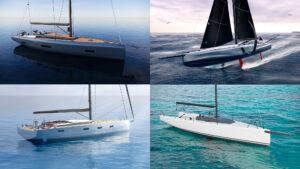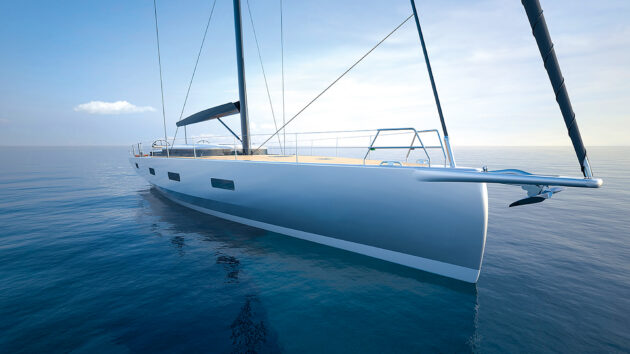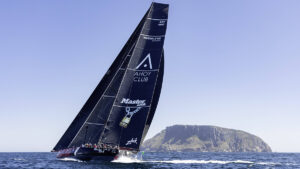From agile racers to swift cruisers, a new breed of monohulls is hitting the water, blending cutting-edge design with surprising versatility for unparalleled performance
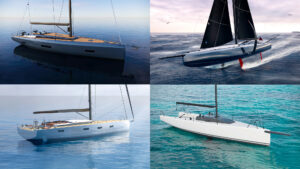
While the allure of multihulls has grown in recent decades, the there are still plenty of sailors looking for the sailing benefits offered by monohulls. Currently we are seeing an evolution in monohulls, with builders and designers pushing the boundaries of what a performance monohull can achieve, balancing raw speed with surprising levels of comfort and ease of handling.
This new generation of fast monohulls showcases remarkable innovations across the size spectrum. From larger, semi-custom carbon cruisers designed for short-handed offshore passages to highly refined smaller racers and groundbreaking foiling concepts, the emphasis is on maximising performance while ensuring practical usability.
Y Yachts Y6
Over the past decade Y Yachts’ range of 70 to 90-footers has stood out from the pack in an increasingly crowded market place. These semi-custom lightweight carbon fibre yachts offer a level of simplicity, along with the possibility of short-handed – or even solo – sailing that’s rarely encountered on a fast cruising yacht of this size.
Compared to the Y7, this model is proportionally slightly heavier and has a marginally lower sail area/displacement ratio, though it’s still within the ultra-light bracket. Full carbon construction helps to minimise weight and means that impressive performance, including in light airs, can be achieved with a relatively modest sail area. It also translates directly into lower sheet loads.
In addition, the jib is self-tacking and there’s in-boom mainsail furling, while all lines are led aft to powered winches at the helm stations. All key manoeuvres can therefore be carried out by one person and without going forward.
The beam of 5.75m (18ft 10in) is wider than that of typical performance cruisers of this size, increasing both form stability and interior volumes. A key feature below decks is the forward master cabin, which has a rectangular walk-around freestanding bed. An opening hatch directly above the bed maximises natural ventilation at night, reducing the need to run air conditioning. Up to three guest cabins are possible, while there’s also space to accommodate an office area if required.
Y Yachts’ ‘keep it simple’ philosophy extends to minimising equipment so that only the essentials are on board, while wiring runs and systems are installed in a fashion that makes it easy for an owner to understand and carry out maintenance and fault-finding when necessary.
Y6 specifications
LOA: 19.65m / 64ft 6in
Draught: 3.50m or 2.85m / 11ft 6in or 9ft 5in
Beam: 5.75m / 18ft 10in
Displacement: 25,900kg / 57,100lb
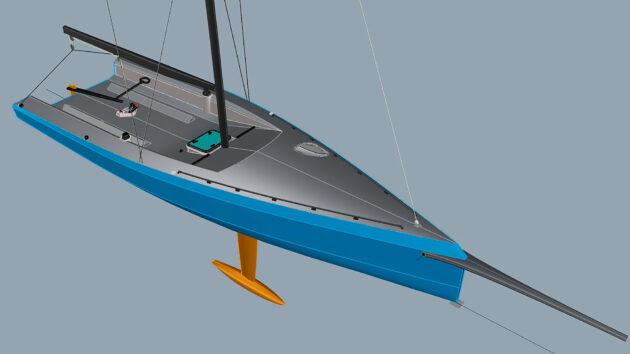
Cape 26
The top end of the small keelboat racing arena appears to be consistently healthy, with world championships in classes such as the J/70 invariably oversubscribed and qualification a necessity even in 50-year-old fleets such as Etchells.
The Cape 26 capitalises on the success of the very high-octane Cape 31, which has attracted many of the top racing teams from the UK and around the globe.
“We want to offer the same exhilarating high performance of the Cape 31 in a smaller boat that can reach a wider audience,” designer Mark Mills told Yachting World. The Cape 26 is also a strict one-design class raced with only four crew. It’s intended to offer hassle-free setup and sailing, while being easy to tow and easily launched from a slipway (hence Mills has included a retractable keel and rudder).
The headsail is on a roller furler and there’s a bow launching arrangement for the spinnaker, so crew should not need to go forward when racing. In addition, hiking is not allowed so crew sit facing inboard in a comfortable fashion. Nevertheless, this is still a powerful, high-adrenaline boat, with around double the sail area of the smaller J/70, but only 20% more displacement.
It is being built by Cape Performance Sailing, the same South African yard behind the Cape 31 and exciting new Cape WT10 trimaran we featured in our February issue.
Cape 26 specifications
LOA (bowsprit folded): 7.80m / 25ft 7in
Beam: 2.55m / 8ft 4in
Draught (race mode): 2.05m / 6ft 8in
Displacement: 1,050kg / 2,315lb
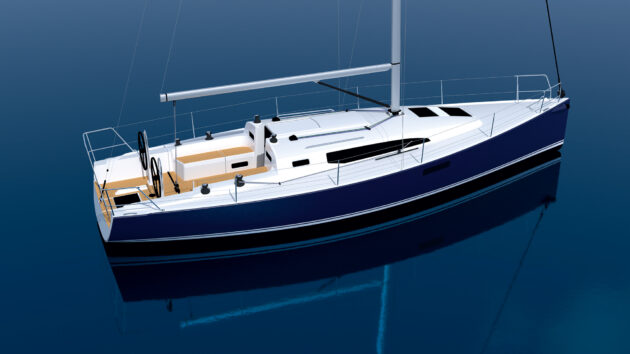
J/36
This is an evolution of the popular J/112e, with the deck layout, companionway and cockpit updated. The aim was to improve ergonomics when short-handed and make it easier to move around the boat.
Fred Bouvier of J/Composites says no improvements were needed for the hull shape, sail plan or the keel and rudder profiles of the existing boat, but some aspects of the ergonomics are improved.
The twin wheels, for example, are not a nod to fashion. Instead, they make it easier to move around the boat when sailing offshore. Even then, this change was carefully considered. “The big wheel was there for a reason on the J/112,” Bouvier told us. “It’s the best way to get a great sensation when you’re helming, because you have a very direct link to the rudder.”
Experience with the J/40 launched last year, however, showed that much smaller twin wheels would be possible for the 36, without detriment to the feel of the boat.
J/36 specifications
Hull length: 10.99m / 36ft 0in
Beam: 3.60m / 11ft 10in
Draught: 2.10m / 6ft 11in
Displacement: 5,125kg 11,300lb
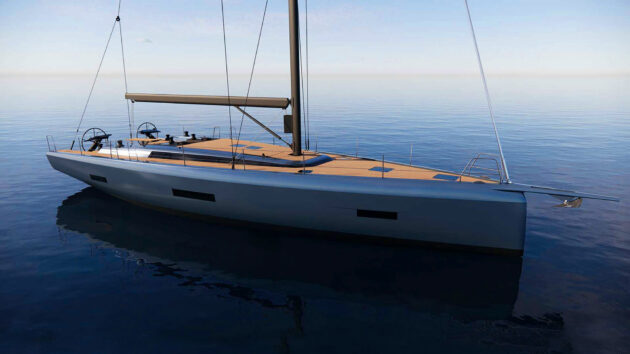
Ice 56
This Umberto Felci design is another powerful and lightweight yacht with a sporty DNA that incorporates thinking from larger yachts, including the external styling that’s derived from its new 80ft Maxi Ice. The sleek deckhouse, for instance, has a larger glazed area than those of previous models of this size from this Italian yard, improving both natural light in and panoramic views out.
Ice has also put a lot of effort into producing the best possible owner’s cabin. In this case, it’s forward, with a peninsula bed, lots of floor space, plus generously sized toilet and shower compartments. There’s no space for a skipper cabin right forward, but there is a decent size sail locker, plus a 3m tender garage aft.
Ice 56 specifications
LOA: 16.90m / 55ft 5in
Beam: 5.10m / 16ft 9in
Draught: 2.80m / 9ft 2in
Displacement: 15,500kg / 34,200lb
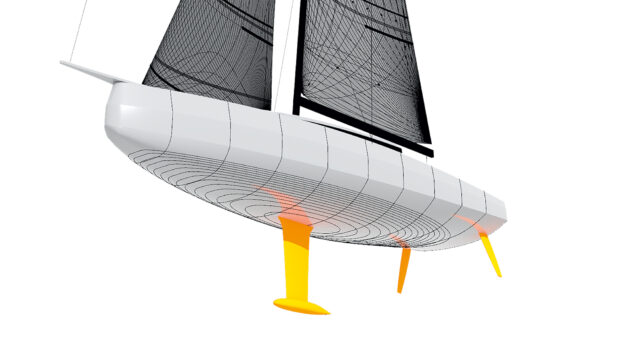
JPK1050
For a long time conventional wisdom has said it’s impossible to create a competitive offshore racing boat in the 30-36ft size range with proper planing performance. That was disproved two years ago when Lann Ael 3, Didier Gaudoux’s 35ft Manuard/Nivlet-designed one-off, won the IRC Double Handed European Championship.
JPK had already considered similar design ideas back in 2018, when Jacques Valer designed a scow bow version of the JPK1030, but at the time it was thought too big a risk and the idea was shelved until Gaudoux’s boat proved it could work.
The JPK1050 is a very powerful 34-footer with full forward sections, though these are a lot less radical than some of the scow bow Class 40s and Mini 650s. JPK founder Jean-Pierre Kelbert describes it as a “planing boat, with very high performance reaching, downwind and upwind.” The first boat, launched earlier this year, took 1st place overall among the 38 IRC double-handed boats at Spi Ouest, its first regatta.
JPK1050 specifications
LOA: 10.45m / 34ft 3in
Beam: 3.54m / 11ft 7in
Draught: 2.22m / 7ft 3in
Displacement: 3,500kg / 7,720lb
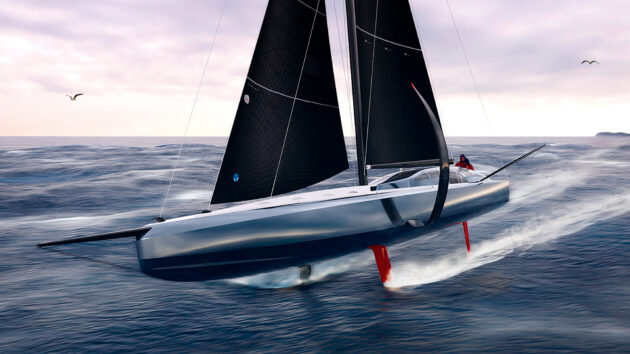
Metis 45
This Italian-designed and built foiling offshore racer is intended to fill the big gulf between Class 40s and IMOCA 60s. Full details have not yet been released, but we’re told the boat will be able to achieve full foiling on offshore courses without the need for complex and expensive active control systems. Instead, adjustable foils on each side of the keel bulb are used to control flight.
The boat is designed to accommodate crews of two to five people, plus an onboard reporter. Deck layout follows a similar pattern to those of recent IMOCAs and Class 40s, with a fully enclosed cockpit with large transparent panels to maximise visibility of sails and the horizon.
French teams are often thought of as being dominant in this space, but the Metis 45 comes from an Italian yard with impeccable credentials. For example, it built the Guelfi D’Angeli-designed Musa 40 scow bow Class 40 that propelled Ambrogio Beccaria to victory in the 2022 Normandy Channel Race and Transat Jacques Vabre, as well as last year’s Transat CIC single-handed race from Lorient to New York.
Metis 45 specifications
Hull length: 13.7m / 45ft 0in
Beam: 4.5m / 14ft 8in
Draught: 3.5m / 11ft 6in
Displacement: 4,000kg / 8,800lb
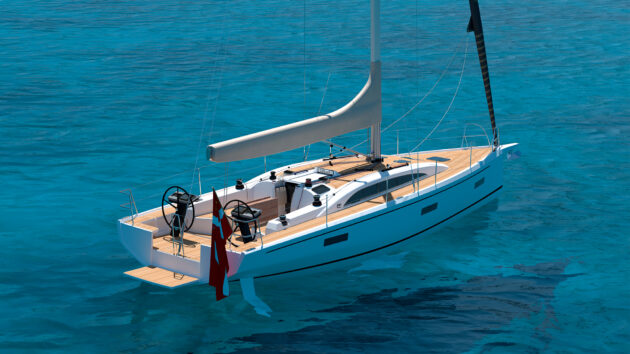
JP40
Niels Jeppesen, co-founder and former design director of X-Yachts, has created this 38-footer as his second project with naval architect Ariadna Pons, following the Arcona 50 that launched two years ago.
The JP40 is intended as a powerful and timeless design that combines cruising comforts with good performance. There’s an emphasis on ease of handling, but this doesn’t come at the expense of efficient sailing, and the set-up is intended to facilitate accurate sail trim.
Generous beam is carried well aft at deck level, while a U-shape transom helps to minimise wetted surface area, thus helping to boost performance in light airs and upwind.
A high chine extends roughly one-third of the way forward, so form stability should build quickly as heel angle increases.
Below decks the layout and ergonomics are designed for comfort when living aboard. There’s a choice of two or three cabin layouts, with the quarter cabins benefitting from the wide beam aft and therefore able to be set up with a big double berth or a pair of side-by-side singles.
The boat can be specified as a family cruiser, with a removable tall transom that includes a bathing platform, plus an anchor handling system, cockpit table and sprayhood.
Alternatively, it can be specified as a competitive inshore or offshore racing boat, with a different keel and tweaks to the rig and deck layout.
JP40 specifications
Hull length: 11.58m / 38ft 0in
Beam: 3.90m / 12ft 10in
Draught: 2.10m or 2.32m / 6ft 11in or 7ft 3in
Displacement: 7,500kg / 16,534lb
 If you enjoyed this….
If you enjoyed this….
Yachting World is the world’s leading magazine for bluewater cruisers and offshore sailors. Every month we have inspirational adventures and practical features to help you realise your sailing dreams.Build your knowledge with a subscription delivered to your door. See our latest offers and save at least 30% off the cover price.
Note: We may earn a commission when you buy through links on our site, at no extra cost to you. This doesn’t affect our editorial independence.
The post 7 next-generation fast monohulls coming to you this year appeared first on Yachting World.
